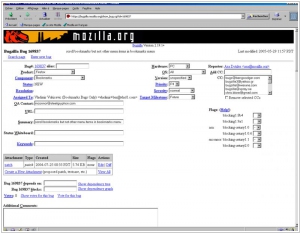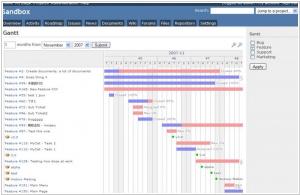Bugzilla vs Redmine
March 08, 2025 | Author: Michael Stromann
9★
Bugzilla is server software designed to help you manage software development. Bugzilla is a "Defect Tracking System" or "Bug-Tracking System". Defect Tracking Systems allow individual or groups of developers to keep track of outstanding bugs in their product effectively. Most alternative defect-tracking software vendors charge enormous licensing fees. Despite being "free", Bugzilla has many features its expensive counterparts lack. Consequently, Bugzilla has quickly become a favorite of thousands of organizations across the globe.
14★
Redmine is a flexible alternative project management web application. Written using the Ruby on Rails framework, it is cross-platform and cross-database. Redmine is open source and released under the terms of the GNU General Public License v2 (GPL).
See also:
Top 10 Issue-tracking systems
Top 10 Issue-tracking systems
Bugzilla and Redmine, two gallant pieces of software, both exist to make sense of the chaotic mess that is issue tracking. They dutifully log problems, assign blame—er, responsibility—and notify everyone involved with an email they will promptly ignore. Both let multiple people work together in an orderly fashion, define permissions so the wrong people don’t break things (which they will anyway) and integrate with version control systems to ensure that mistakes are not only made but are also meticulously documented.
Bugzilla, born in the United States in 1998, is the older, wiser and considerably grumpier of the two. It takes bug tracking very seriously, offering an almost disturbingly detailed search and filtering system, perfect for those who enjoy staring at logs for extended periods. However, it lacks any real project management features because, frankly, it believes that’s someone else’s problem. If you’re after a no-nonsense, hyper-focused bug tracker, this is your beast.
Redmine, on the other hand, comes from Japan and has been around since 2006, bringing with it a slightly more optimistic outlook. Unlike Bugzilla, it does not just track bugs; it also tracks time, organizes projects and includes a wiki, because who doesn’t love an extra place to argue over documentation? It even supports multiple databases, ensuring that no matter what you were originally trying to do, you’ll have at least three different ways to get completely lost.
See also: Top 10 Issue Trackers
Bugzilla, born in the United States in 1998, is the older, wiser and considerably grumpier of the two. It takes bug tracking very seriously, offering an almost disturbingly detailed search and filtering system, perfect for those who enjoy staring at logs for extended periods. However, it lacks any real project management features because, frankly, it believes that’s someone else’s problem. If you’re after a no-nonsense, hyper-focused bug tracker, this is your beast.
Redmine, on the other hand, comes from Japan and has been around since 2006, bringing with it a slightly more optimistic outlook. Unlike Bugzilla, it does not just track bugs; it also tracks time, organizes projects and includes a wiki, because who doesn’t love an extra place to argue over documentation? It even supports multiple databases, ensuring that no matter what you were originally trying to do, you’ll have at least three different ways to get completely lost.
See also: Top 10 Issue Trackers





